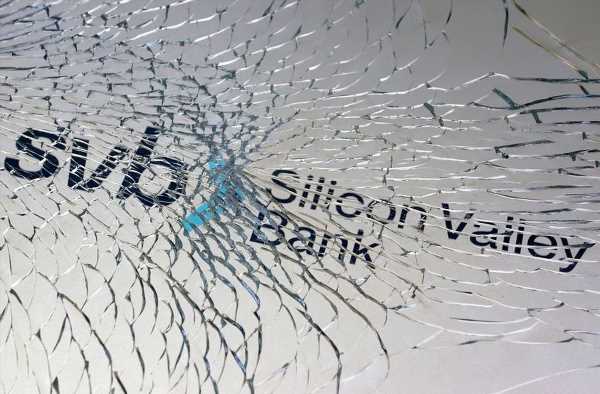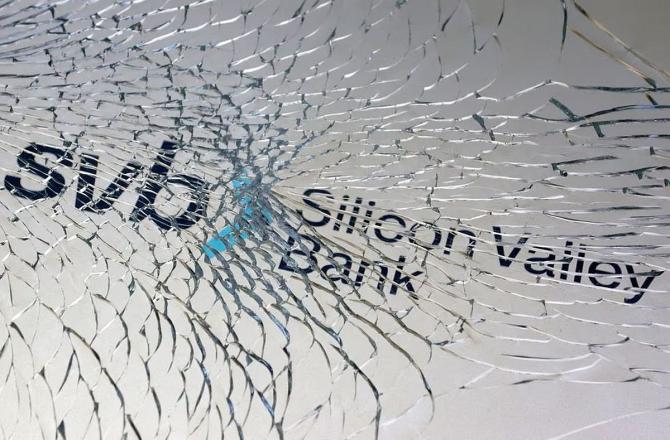Lessons For Banks To Learn From SVB Collapse
The difference between what the banks play in the US and India is not that of soccer and football, but rugby and football.
But when risks are mispriced, the fallout could be very similar, points out Tamal Bandyopadhyay.
‘We have worked urgently over the weekend, listening to stakeholders and developing an appropriate solution to provide Silicon Valley Bank UK customers with confidence and security.
‘I am pleased to be able to say we have reached a resolution.
‘The good news is, customers of SVB UK will be able to access their deposits and banking services as normal from today.
‘That’s because Silicon Valley Bank has been sold to HSBC…
‘No taxpayer money is involved, and customer deposits have been protected…’
Rishi Sunak, prime minister of UK, who feels proud of being labelled as a tech geek, posted this on LinkedIn while playing the white knight.
It was a typical rescue act. SVB, the 16th-largest bank of the US, collapsed on March 11, after depositors rushed to withdraw money, leading to the second biggest bank failure in US history after the collapse of Washington Mutual in 2008.
The Federal Deposit Insurance Corporation did not lose time. It stepped in to soothe the frayed nerves of SVB customers.
Behind the scenes, the deal was stitched over the weekend. It was business as usual for the bank.
A familiar scene in India. Typically, the customers of troubled banks here spend a few sleepless nights while the Reserve Bank of India, after freezing the operations of the concerned banks, plays the role of the matchmaker (from behind the scene) and announces the deal in the shortest possible time.
That was the story of Oriental Bank of Commerce taking over Global Trust Bank Ltd in July 2004 and the State Bank of India, leading a clutch of banks, to rescue YES Bank Ltd, in March 2020.
But the similarity ends here. SVB, the 16th-largest bank in the US with around $200 billion in assets as of January, is a very different beast.
While most banks are not supportive of high-risk tech start-ups, that was SBV’s playing turf.
But this had not led to its downfall.
It failed as it could not manage the interest rate risks.
Many tech start-ups, including some from India, parked their funds with SVB which had invested in long-dated securities.
With the rise in interest rates, yields on these assets started rising, eating up the value.
In March 2022, the US Federal Reserve had announced its first policy rate hike since December 2018, raising it to a range of 0.25-0.50 per cent.
In the past one year, the Fed rate has risen to 4.5-4.75 per cent and more hikes could follow.
In tandem, the yields on government securities have moved, eroding their value in the SVB portfolio.
As the unrealised and unhedged losses mounted from investments, the tech start-ups that kept their money with SVB started losing trust in the bank.
When the investments in such start-ups slowed, they had to pull out funds as they needed money to meet operational expenses.
This left SVB with no choice but to sell some of the securities, booking losses.
One thing led to another. The loss eroded its capital. But it could not raise money and haplessly watched the panic-stricken start-ups queuing up to withdraw funds, leading to a run on SVB.
The 40-year-old bank, headquartered in Santa Clara, California, rushed in where Wall Street banks feared to tread.
It managed the high risk of financing tech start-ups deftly but was vulnerable to interest rate risks which killed it.
It’s a classic case of asset-liability mismatch — an offshoot of mispricing risks.
In sync with the rest of the world, the stock market in India felt the heat and the bank stocks bore the brunt — reminiscent of the collapse of Lehman Brothers Holding Inc in September 2008.
There was so much panic that more than a century-old SVC Cooperative Bank Ltd had to release an advertisement, saying it’s an Indian bank and has nothing to do with SVB of the US.
Did the market over-react to the collapse of SVB? Are there lessons learnt from the episode?
Yes, of course. Indian markets did over-react and, at the same time, there are lessons from the fall of SVB that Indian banks must learn.
The difference between what the banks play in the US and India is not that of soccer and football but rugby and football.
SVB also has a unique character. But when risks are mispriced, the fallout could be very similar.
A little bird tells me that cracks have started surfacing in the unsecured loans, mortgages and loans given to the micro, small and medium enterprises (MSMEs) in India.
If a borrower does not pay a loan instalment (principal or interest) for more than 90 days, the account turns bad.
Until 90 days, it remains standard but stressed.
In case a borrower is not able to pay one instalment (30 days), it signals incipient stress and the account is called SMA-0.
For non-payment until 31 to 60 days, it is SMA-1; and for 61 to 90 days SMA-2.
This stress has started showing in certain loans. The primary reason being the rise in interest rates.
All such loans are floating rate loans, either linked to an external benchmark such as the RBI’s repo rate and 364-day treasury bill yield or banks’ marginal cost of funds.
A recent report of SBI’s Chief Economist Soumya Kanti Ghosh points out that with 2.5 percentage points rise in the RBI’s policy rate between May 2022 and now, the interest cost for the retail borrowers have risen 16 per cent.
The choice before the borrowers is either paying higher instalments or stretching the tenure of the loan.
But there is a limit to what extent the tenure of a loan can be stretched, depending on the type of the loan and age of the borrower, among other things.
A Mint report says home loan tenures jump to over 50 years, following the rate hikes.
Around three-fourths of the MSMEs are seeing their business remaining either stagnant, decreased or wound up in the past five years, a recent survey of 108,500 entrepreneurs conducted by the Consortium of Indian Associations points out.
During the last five years, the performance of 72 per cent of the respondents is either stagnant, decreasing, stopped or wound up.
Only 28 per cent of the respondents have confirmed that they are growing.
This is a warning sign. Seventy-six per cent of the respondents have said they are not making a profit, an Indian Express report says, quoting the survey.
Higher interest costs have also hit the affordable housing segment hard.
Going by the data of industry analyst PropTiger, the share of affordable homes in overall sales shrank by 11 percentage points in January-September 2022 compared with the pre-Covid period.
In 2019, affordable homes formed 51 per cent of overall home sales in India’s top seven real estate markets.
Some of the banks have been liberal in giving retail loans to boost credit before putting in place the right risk management and underwriting mechanism.
They may have to pay the price in the coming days.
In one year between end-January 2022 and 2023, the banking industry has seen 20.4 per cent growth in personal loans, which include mortgage and consumer durables among others.
During this period, loans to large industries have seen 8.5 per cent growth.
The SVB debacle will also put pressure on the RBI. Even though the rate hike cycle in India is not as sharp as in the US, the noise is getting louder on ending it even though inflation has again risen beyond the upper band of the target.
Will the RBI put the brakes or change the gear when its monetary policy committee meets? Let’s wait and watch.
Tamal Bandyopadhyay is a consulting editor, Business Standard and senior adviser to Jana Small Finance Bank Ltd.
Source: Read Full Article


